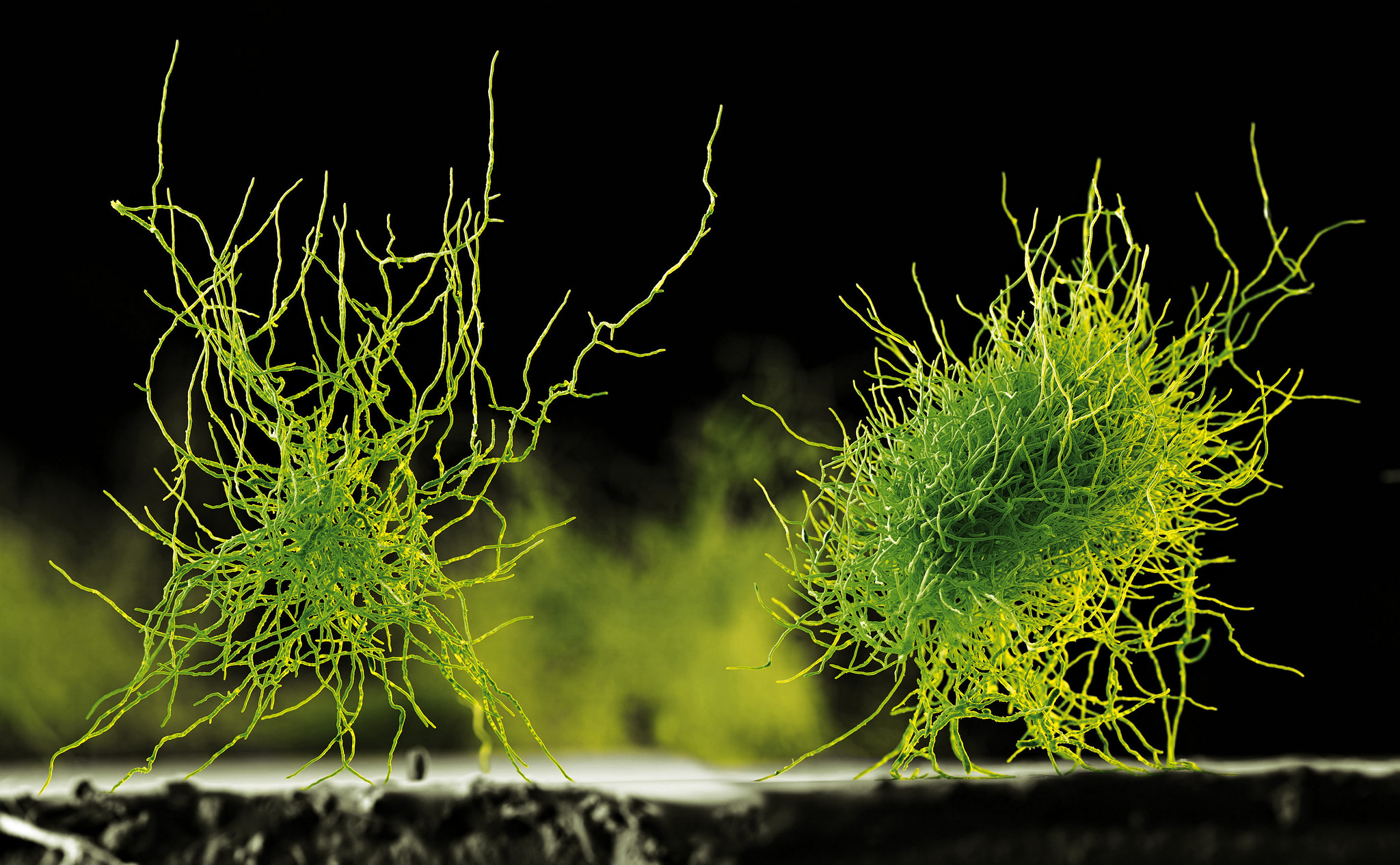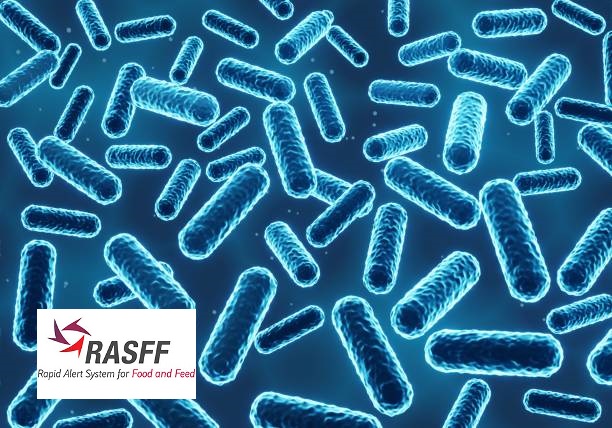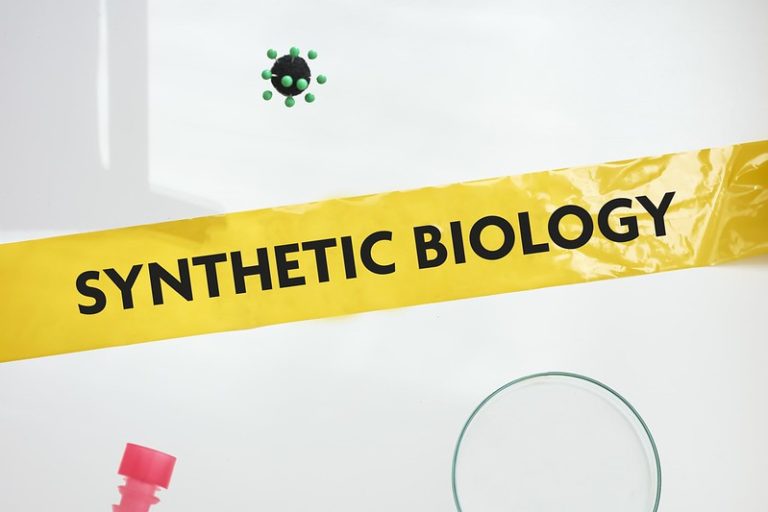GMO micro-organisms: discreet production factories

GMOs are certainly plants… but not only. Many micro-organisms (bacteria, yeast) are used as factories for producing molecules. And many of these micro-organisms have been genetically modified to produce enzymes, vitamins, amino acids, etc. that they do not produce naturally, or to give them characteristics specific to industrial needs. In a series of articles, Inf’OGM attempts to shed more light on this market, which has gone unnoticed for too long.
For a long time, the acronym GMO has been associated only with plants. Even today, maize, rapeseed and soya that have been genetically modified to resist herbicides or produce insecticidal proteins immediately come to mind. However, another class of organisms is subject to genetic modification in the laboratory: micro-organisms. Bacteria, yeasts and fungi are used in confined environments to produce molecules of interest used in many sectors, among which is the food processing. Although these genetically modified micro-organisms (GMMs) are intended to remain in a confined environment to produce a molecule, release accidents can nevertheless occur.
In this article, we will focus solely on micro-organisms that produce molecules for food and feed. To provide information on this subject, Inf’OGM has delved into the database of the European Food Safety Authority (EFSA), which lists applications for authorisation submitted and opinions issued [1]. Although difficult to access, this database does at least allow us to consult the non-confidential information provided by companies describing how a particular molecule is produced. However, Inf’OGM is not in a position to claim that the information obtained is exhaustive [2].
A prerequisite: regulatory status
The first question is whether or not the micro-organism presented in this database is genetically modified. This information seems simple to provide. However, this is not the case. The micro-organism is either clearly declared as genetically modified, or not genetically modified, or no clear information is given. Yet this information is fundamental. In fact, any molecule produced by a genetically modified micro-organism is subject to European legislation on GMOs, and in particular its labelling obligation. At least, this was true when the regulations were adopted in 2003. But in 2004, the European Union changed the framework for micro-organisms for commercial reasons essentially. The Member States decided that year that molecules produced by GMMs should no longer be subject to compulsory labelling. This was done without changing the existing legislation, which would have been a long and tedious process. The end of transparency was decided by a “simple” political decision with a new reading of the ongoing legislation. Member states decided that molecules produced by GMMs “should be considered as produced with GMMs rather than from GMMs” [3]. As they were no longer officially produced “from”, these molecules were – and are still – no longer subject to labelling requirements (except in special cases).
What products are produced by micro-organisms?
Since 2005, several hundred applications for authorisation of molecules produced by micro-organisms have been submitted to the European authorities. These applications concern a wide variety of products: enzymes used to transform foodstuffs, vitamins to supplement preparations, chemical additives for preservation or taste, etc. Of the 723 applications for authorisation that Inf’OGM has consulted, the vast majority concern enzymes (601 applications) [4]. The other applications concern vitamins (62) and other additives, such as sugars and amino acids (60). The table below summarises the proportion of molecules produced by genetically modified micro-organisms.
| Molecules | Number of applications seen | Origin | ||
| Declared as GMM | Incertain | Declared as non-GMM | ||
| Enzymes | 601 | 242 | 252 | 107 |
| Vitamins | 62 | 9 | 19 | 34 |
| Other additives | 60 | 22 | 20 | 18 |
Enzymes therefore account for the majority of dossiers on molecules produced by GMMs. The 601 enzyme dossiers ultimately concerned 111 different enzymes, 58 of which may have been produced by a GMO. A wide range of characteristics are sought, such as resistance to certain temperatures for example or greater activity in acidic environments.
Vitamins, on the other hand, are mainly produced by non-genetically modified micro-organisms. The 62 dossiers consulted concern 14 different vitamins, only one of which is produced by GMMs: vitamin B2. By contrast, only one dossier, submitted in 2020, reported production of this vitamin by a non-GM micro-organism. This vitamin B2 has already made headlines in Europe because, in 2008, eight tonnes of this vitamin imported into Europe were contaminated by the genetically modified bacteria used to produce it [5].
The final class of molecules produced by micro-organisms are food additives. These include amino acids, sweeteners, pigments and minerals such as sodium. They can be produced industrially, either chemically or by extraction from plants, or by micro-organisms. Additives produced by micro-organisms are mainly amino acids. Of the 60 dossiers consulted, 22 involved GMMs.
Which companies?
In this market for molecules produced by micro-organisms, the main industrial players are European or Asian. 137 different “entities” share the 723 applications for authorisation of molecules analysed by Inf’OGM. The number of applications submitted per “entity” varied considerably [6]. Four companies dominate: 37% of the applications consulted were submitted by Novozymes, DSM Nutritional Products, Danisco and Amano Enzyme. Three of these are European (two Danish and one Dutch), and one is Japanese.
And the concentration increases if we look only at dossiers involving micro-organisms formally declared as genetically modified. 60% of the applications consulted were filed by four “entities”. Novozyme is the leader with 54 applications, followed by DSM (42 applications), Danisco (40 applications) and AB Enzyme (21 applications). Additionally, we’ll see in another article that these companies have close links and each owns several subsidiaries. As a result, concentration is even higher.
[1] EFSA’s database, accessible under registration : https://open.efsa.europa.eu/
[2] In our search, one article will be dedicated to the issues faced when using this database and will therefore explain why we cannot guarantee exhaustivity.
[3] , « Les micro-organismes génétiquement modifiés, part sombre du dossier OGM », Inf’OGM, 5 July 2022.
[4] We are refering only to the applications and, where applicable, the opinion issued by EFSA.
[5] , « Vitamine B2 : contamination en cours par une bactérie transgénique », Inf’OGM, 7 December 2018.
[6] We talk here about “entities” as the concerned actors are not just companies but also subsidiaries, consultancies specialising in European applications, inter-professional unions, etc.











